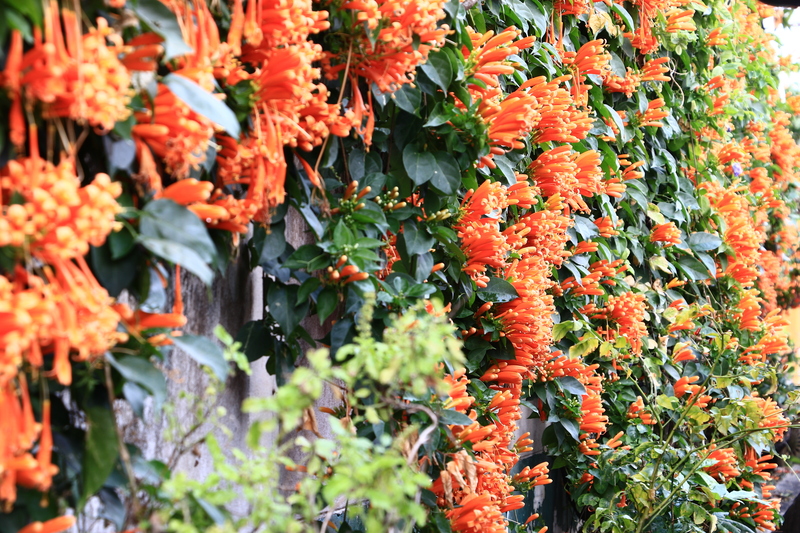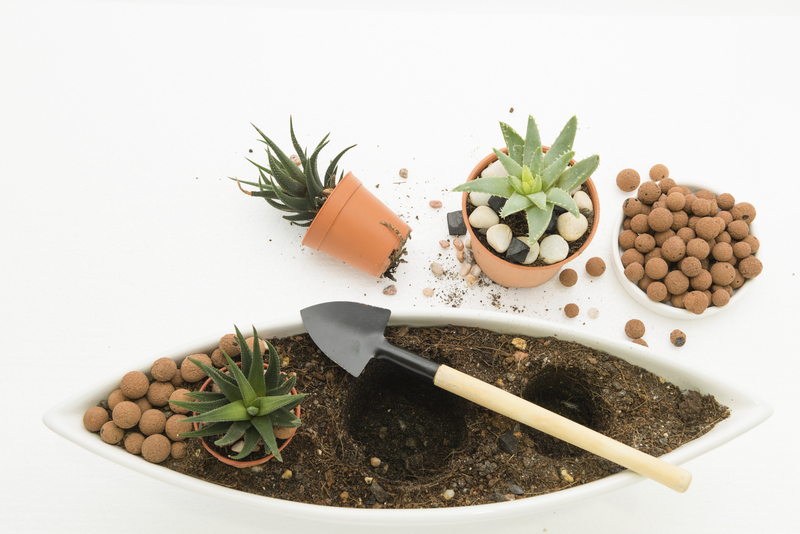Flourishing Flora: Keeping Your Pup Happy
Posted on 28/05/2025
Flourishing Flora: Keeping Your Pup Happy
As dog lovers, we're always on the lookout for ways to keep our furry companions joyful, comfortable, and wagging their tails. One sometimes overlooked factor in our pets' well-being is the immediate environment, especially the plants and flourishing flora surrounding our homes and yards. In this comprehensive guide, we'll explore the best ways to create a pet-friendly garden, ensure your puppy's safety around plants, and use greenery to enhance your dog's happiness.

Understanding the Connection Between Dogs and Flora
Dogs are naturally curious animals. Their love of sniffing, digging, rolling, and occasionally nibbling in the garden is part of who they are. Pet-friendly gardening doesn't just mean keeping toxic plants away; it's also about enriching your pup's experience, providing mental stimulation, comfort, and even health benefits through a flourishing environment.
Benefits of a Lush, Dog-Friendly Garden
- Encourages Exercise: Open, green areas prompt your pup to run, play, and explore.
- Relieves Boredom: Variety in textures, scents, and colors counters monotony.
- Reduces Stress: Natural surroundings can calm dogs, lowering anxiety and barking.
- Supports Joint Health: Softer grass or groundcovers are gentler on paws and joints than hard surfaces.
- Enhances Bonding: Shared time in a well-designed garden increases positive interactions between you and your pet.
Dog-Safe Plants: The Backbone of a Happy Yard
To create a flourishing flora that's safe for dogs, it's vital to select non-toxic plants. Unfortunately, many common garden staples can be harmful to pets if ingested--think lilies, azaleas, and sago palms. Research extensively or consult your veterinarian before introducing new flora. Here's a starter list of safe and attractive plants for your dog-friendly garden:
Top 10 Dog-Safe Plants
- Spider Plant (Chlorophytum comosum)
- Bamboo Palm (Chamaedorea seifrizii)
- Boston Fern (Nephrolepis exaltata)
- Marigolds (Tagetes)
- Snapdragons (Antirrhinum)
- Sunflowers (Helianthus)
- Calendula (Calendula officinalis)
- Sage (Salvia officinalis)
- Rosemary (Rosmarinus officinalis)
- Catnip (Nepeta cataria) - yes, dogs often enjoy it too!
Avoid common dog-toxic plants such as oleander, foxglove, lilies, and daffodils. Always double-check the safety of plants, especially with puppies prone to chewing.
Enriching Your Dog's Life with Flourishing Flora
Creating a Sensory Garden
Just as humans benefit from sensory gardens, your dog will thrive with flowers, herbs, and grasses that stimulate their senses. Here's how flourishing flora supports canine happiness:
- Scent: Plant aromatic herbs such as lavender and mint (in moderation), which dogs love to sniff and roll in.
- Texture: Grasses, soft ferns, and lamb's ear provide soothing surfaces underfoot.
- Sound: Tall grasses and bamboo make gentle rustling sounds to intrigue your pup.
- Visual Interest: Brightly colored blooms and seed heads offer changing sights for inquisitive eyes.
Safe Play and Rest Areas
- Pathways: Weave in broad, soft paths using mulched wood chips or grass for scampering and sniffing expeditions.
- Shaded Nooks: Use shrubs or climbing vines on trellises to create cool retreats for summer lounging.
- Dig Zone: Set aside a section (perhaps a sandpit or loose earth) where digging is allowed--redirect instinctual behavior away from prized plants.
Potential Hazards: What to Watch For
While your goal is a flourishing, dog-friendly oasis, vigilance is key. Here's what to avoid or address quickly:
- Toxic Plants: Review lists from the American Society for the Prevention of Cruelty to Animals (ASPCA).
- Pesticides & Herbicides: Use only pet-safe products; chemicals can linger on lawns and harm your dog.
- Sharp Mulch or Stones: Avoid cocoa mulch and jagged rocks--go for shredded bark or fine pine needles.
- Standing Water: Prevent mosquito breeding and curious laps from puddles. Consider a pet-safe water feature.
Making Indoor Spaces Bloom for Your Dog
Flourishing flora isn't just an outdoor concern. Many dogs spend significant time indoors. Here's how to brighten your house for pets while keeping them safe:
- Opt for Non-Toxic Houseplants: Pileas, areca palms, prayer plants, and African violets are stylish and safe choices.
- Elevate Plants Out of Reach: Use shelves or secure plant stands to avoid curious nibbles.
- Provide Green Views: Place plants in spots your pup can see from their favorite window napping spot, encouraging calm observation rather than destructive chewing.
Additional Ways to Keep Your Pup Happy Through Nature
The Importance of Outdoor Exploration
Daily walks and regular outings to local green spaces allow your dog to experience a world of new scents, sights, and textures. These enrichments are essential for mental stimulation and emotional health. Don't underestimate how even a stroll in a well-landscaped backyard, community garden, or local park refreshes your pup's spirit.
DIY Enrichment with Natural Materials
Get creative: Sticks, pine cones (when safe and supervised), and bundles of safe herbs can be turned into interactive toys or sniff mats. Always supervise play to prevent accidental swallowing or choking.
Year-Round Flourishing: Seasonal Tips for a Happy Pup
Each season brings both opportunities and challenges for keeping your dog happy in a flourishing landscape. Here's what to consider:
- Spring: Introduce new plants and reinforce paths as grass and flowers wake up. Watch out for newly fertilized lawns--keep your dog off freshly treated areas.
- Summer: Provide plenty of shade and water. Mulch paths to prevent burned paws and avoid plants that attract too many bees, which can sting curious snouts.
- Autumn: Rake leaves regularly: mold from damp piles can irritate your dog's skin or cause respiratory issues. Harvest any edible plants before frost.
- Winter: Use pet-friendly de-icing salts and ensure access to a dry, sheltered spot for bathroom breaks and fresh air. Evergreen shrubs keep some color in the garden year-round.
Addressing Allergy and Sensitivity Concerns
Just like people, some dogs react to pollens, saps, and leaf mold. If your canine companion develops sneezing, itchy skin, or red eyes, review your plant list and consider allergy testing with your veterinarian. Regular grooming and paw cleaning after outdoor play can reduce discomfort.
Combining Training With Garden Time
Use your lush garden as a training ground. Practicing basic commands like "leave it," "come," and "stay" in your flourishing backyard introduces distractions that can improve your pet's focus and behavior. Involve toys, treats, and scent games to reinforce positive associations with different flora and features.

Frequently Asked Questions About Dogs and Flourishing Flora
Can dogs safely eat grass or plants?
Many dogs occasionally nibble grass, which is generally considered harmless if the grass isn't treated with chemicals and doesn't cause vomiting or diarrhea. Avoid ornamental grasses or unfamiliar plants that could be toxic.
What are the first signs of plant poisoning in dogs?
Signs include drooling, vomiting, diarrhea, lethargy, unusual behavior, or swelling around the mouth. If you suspect your dog has eaten a potentially toxic plant, contact your vet immediately.
How do I prevent my dog from digging up flowers?
- Designate a digging area and train your dog to use it.
- Use garden barriers or low fencing around flower beds.
- Supervise outdoor time and distract with toys and play.
Can plants help reduce my dog's anxiety?
Yes! Flourishing flora creates a calming atmosphere. Natural scents, visual beauty, and shaded hideaways all contribute to lowering stress for anxious pups.
Are there any dog-safe plants that repel fleas or ticks?
Certain herbs like rosemary and sage have natural pest-repellent properties. However, they are not a replacement for veterinarian-approved flea and tick prevention.
Conclusion: Cultivating Joy With Flourishing Flora
Ensuring your dog's happiness goes beyond food, walks, and cuddles--it's also about the environment you create. By choosing pet-safe plants, designing stimulating spaces, and cultivating a love of nature together, you'll build a thriving garden where both flora and furry friends can bloom. Remember:
- Choose dog-safe plants and avoid toxins.
- Design for play, rest, and exploration.
- Adapt your flourishing landscape for the seasons.
- Address sensitivities or allergies quickly.
- Bond with your pup--discover new floral experiences side by side.
From bounding through buttercups to dozing under sun-dappled shrubs, your dog's happiness grows along with your flourishing flora. Invest in your yard, and you'll nurture your pup's well-being for years to come!

